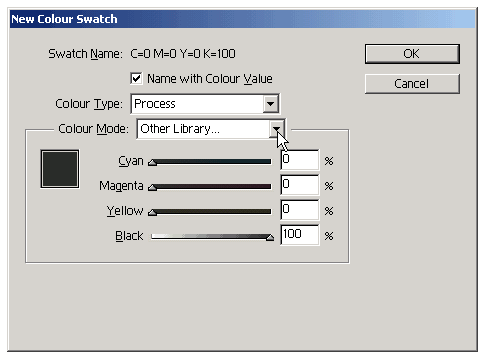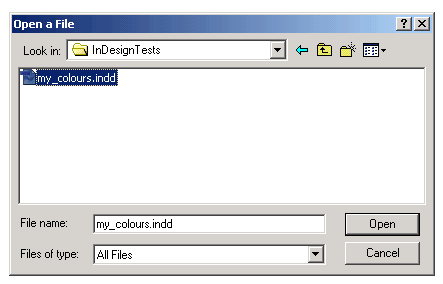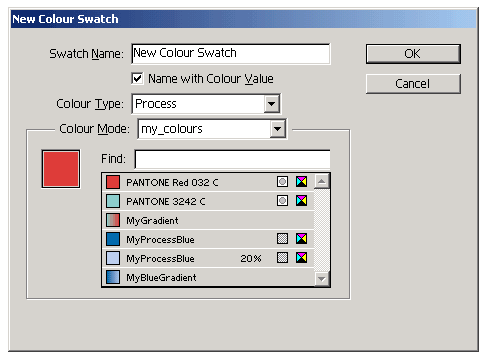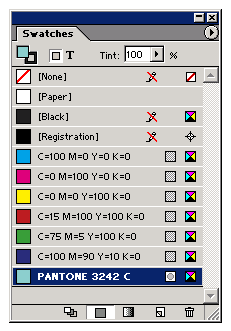Digitip 009 – Adobe InDesign 2
You can add spot colours, process colours, tint and gradient swatches used in one InDesign document to another. It is not possible to do this using a simple one-click method. There is however, a semi automatic method that allows adding of colour swatches used in one InDesign document to another.
Adding swatches from other InDesign documents
Ok, the easiest method would be to apply a save as for the document containing the required swatches, then deleting all the unwanted pages, amending document set-up, styles, master pages etc. This could be a tedious task.
The following method is “kinda” nice. Start by creating a new colour swatch. Once you’re in the New Colour Swatch dialog box, select Other Library… from the Colour Mode pop-up menu and navigate to the InDesign document from which you want to import colours.


Open this InDesign document.
The Colour Mode changes to the InDesign file you’ve selected and colours used in this document become selectable.

Colours can be added one by one. When you add a gradient swatch that is made up of various swatch colours, the gradient swatch AND its matching process or spot swatches will be added. The same applies when adding tint swatches.

It doesn’t matter whether the Colour Type is set to Spot or Process. Spots, process colours and tints will all come across in their original colour type.
Changing the default swatch colour list for each InDesign document
It might be an idea to add commonly used corporate colours to the default colours that appear in the swatches palette. These colours will then become available each time you create a new InDesign document.
Close all documents, then add all the preferred colours to the swatches palette (without having a document open!). If your default colour list is lengthy, it might be handy to keep a copy of the InDesign Defaults file available somewhere. This file contains all of the default InDesign settings. If at any stage this preferences files is deleted from your system, you can replace it with the copy you’ve kept elsewhere.
NOTE: Let me know if you find an easier way of adding colours from one InDesign document to another (other then using the save as method!) and I’ll update this tip.
Leave a Reply